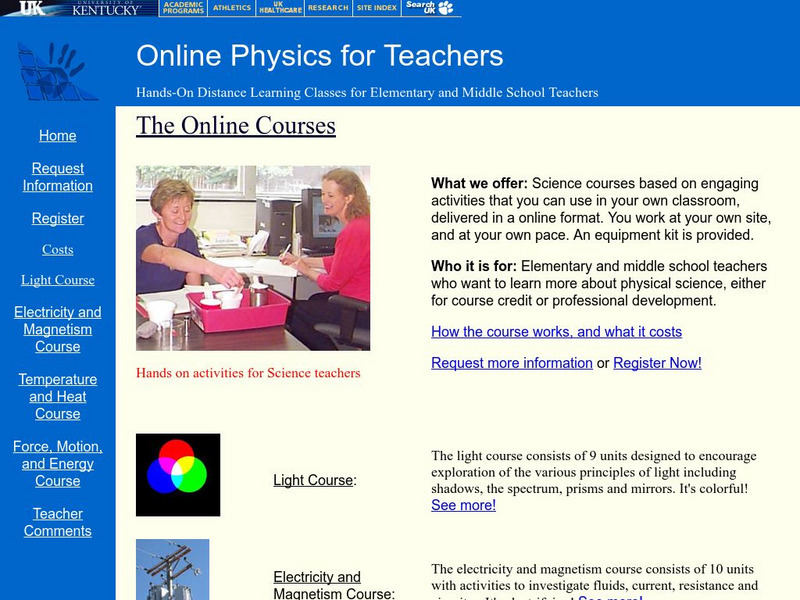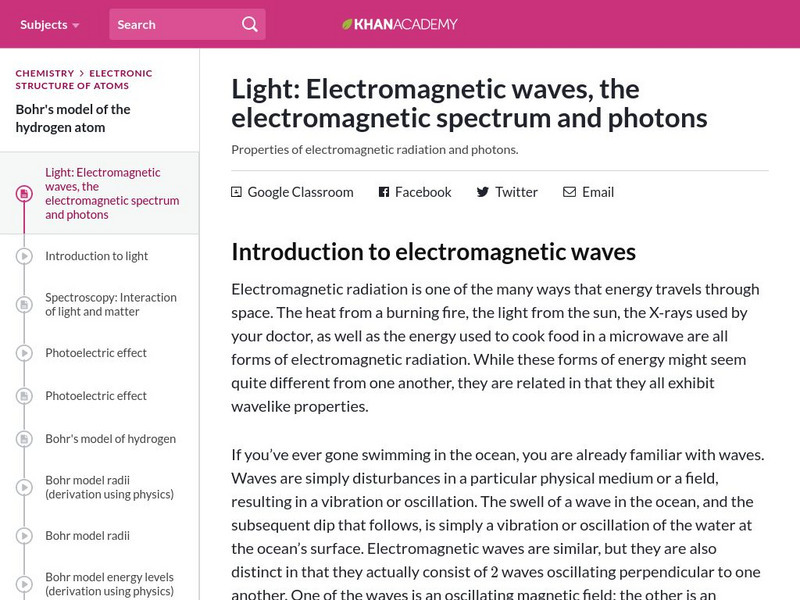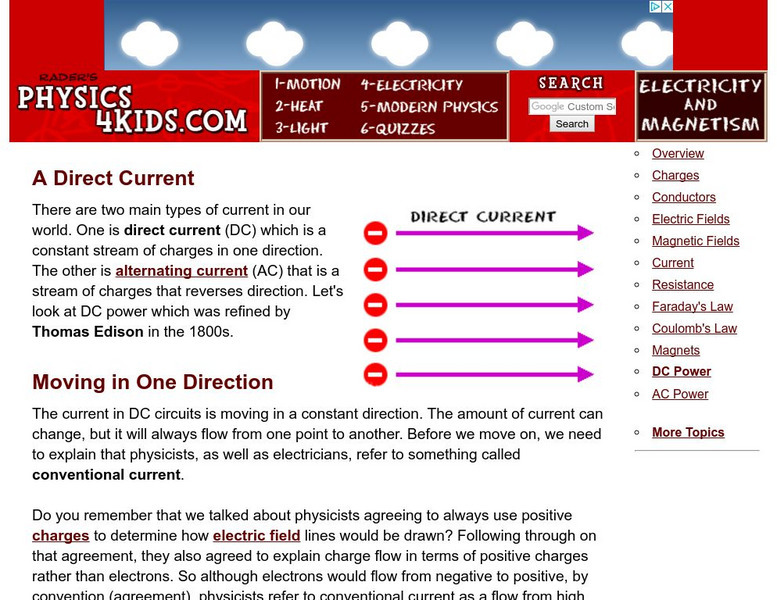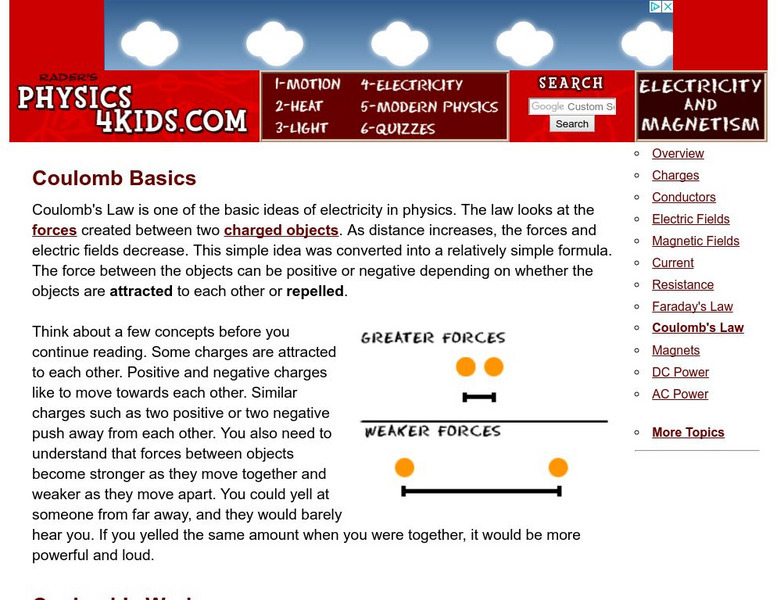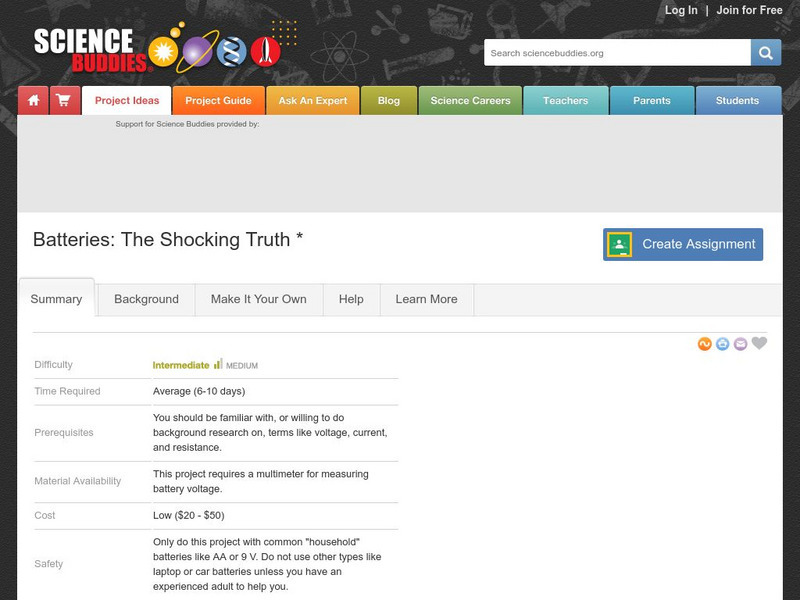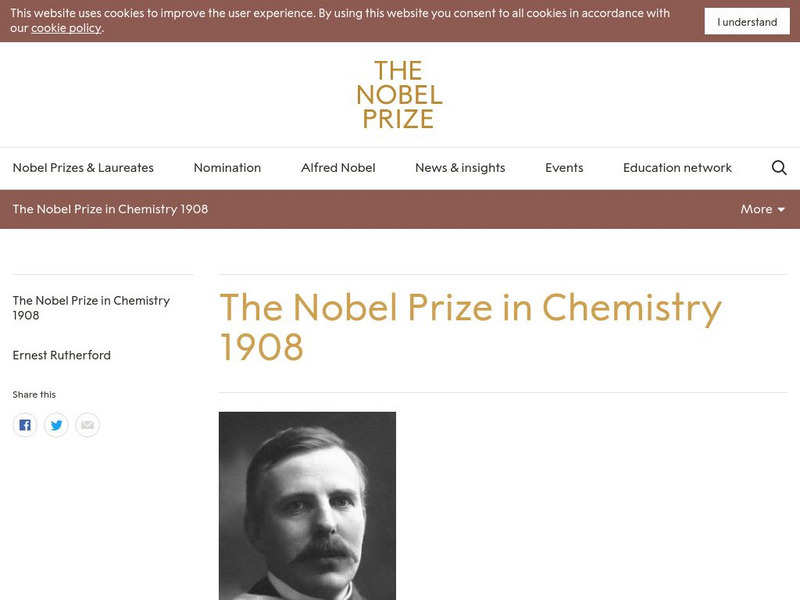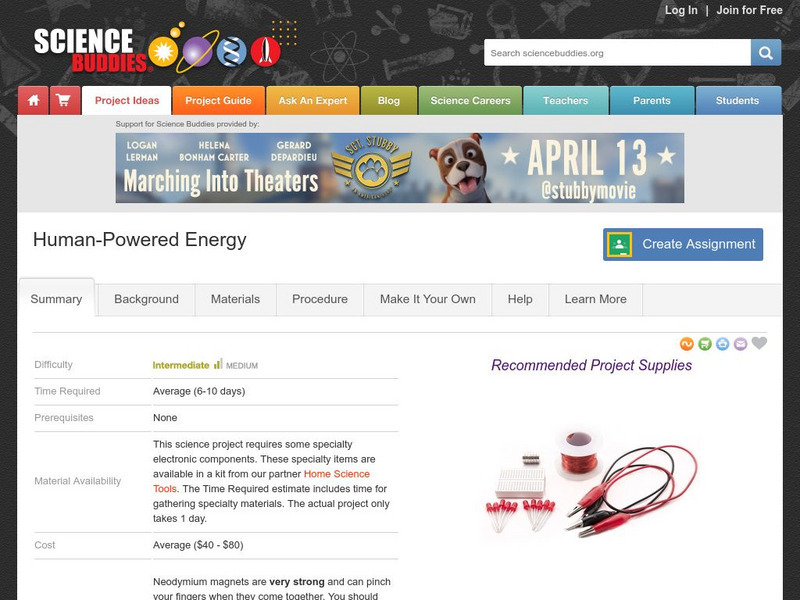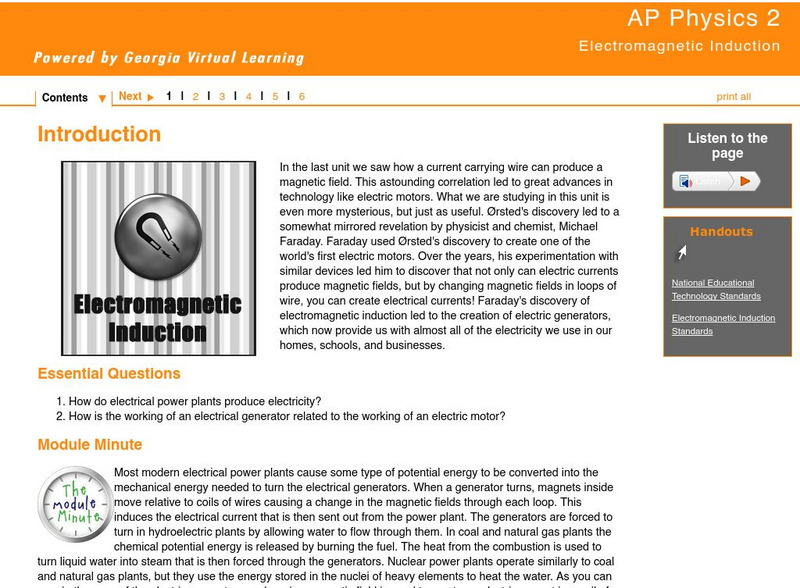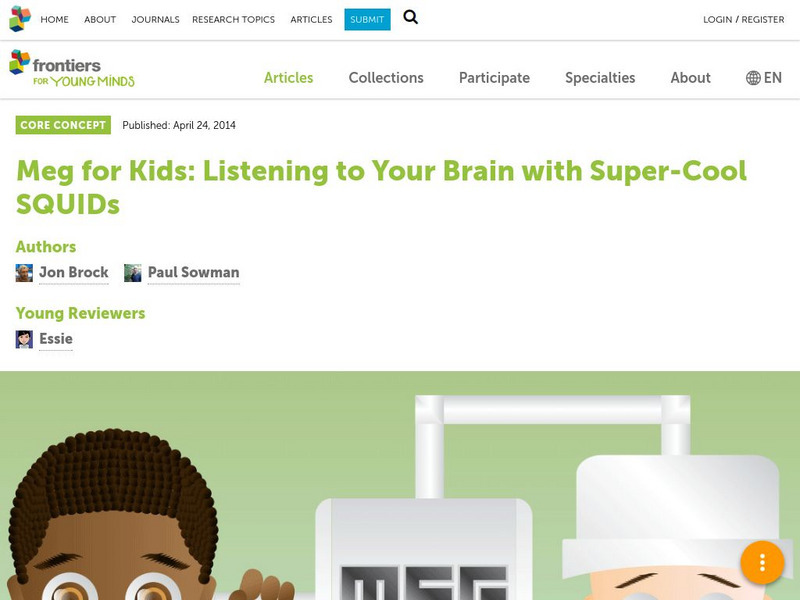University of Kentucky
University of Kentucky: Online Physics for Teachers
A set of four online courses in Physics for elementary and middle school teachers. Each course targets a different topic area - light, electricity & magnetism, temperature & heat, and force, motion, & energy.
Khan Academy
Khan Academy: Electromagnetic Waves: The Electromagnetic Spectrum and Photons
An article that discusses the coupling of an electric field with a magnetic field to create electromagnetic waves. Article also discusses how different types of electromagnetic waves have different wavelengths which forms the...
Annenberg Foundation
Annenberg Learner: Physics: Early Unification for Electromagnetism
Discusses the connection between electricity and magnetism and the early work of Michael Faraday and James Clerk Maxwell. Electromagnetic interactions were first described by Maxwell. Continues on with a discussion of quantum physics and...
Physics4kids
Physics4 Kids: Electricity and Magnetism: Alternating Current
Alternating current, defined and illustrated.
Physics4kids
Physics4 Kids: Electricity and Magnetism: Direct Current
Direct current, defined and illustrated.
Physics4kids
Physics4 Kids: Electricity and Magnetism: Coulomb's Law
Coulomb's law, defined and illustrated.
Princeton University
Princeton University: Joseph Henry
A really fine and complete biography, quite lengthy. Some emphasis placed on his time at Princeton. A great deal of detail can be found here. Link here to the Joseph Henry House.
Oak Ridge National Laboratory
Ornl: Teacher's Guide Superconductivity for High School Students
This site from the Human Genome Project provides a large collection of facts and information, demonstrations, experiments and project ideas. Written for teachers but easily adaptable for any type of student work. A good site to check out...
Science Buddies
Science Buddies: Batteries: The Shocking Truth
Here you can find what you need to scientifically assess battery performance. In this exercise (that should take about one week) learn how batteries work, how they wear out and most importantly, how to make valid measurements to assess...
Nobel Media AB
The Nobel Prize: The Nobel Prize in Chemistry 1908
At this site read about Ernest Rutherford (1871-1937 CE), the scientist who was awarded the Nobel Prize in Chemistry, "for his investigations into the disintegration of the elements, and the chemistry of radioactive substances." This...
World Health Organization
World Health Organization: International Emf Project
The World Health Organization probes into the feared associations between electromagnetic fields (EMFs) and cancer. Check out "What is EMF?" for detailed summaries on what electromagnetic fields are and the possible health effects, or...
Science Buddies
Science Buddies: Shaking Up Some Energy
Shake N' Light flashlights have been advertised on televisions across the nation in the recent year. But many do not understand just how they get energy to light up the bulb without using batteries. Do this experiment to make your own...
Other
Unit conversion.org: Online Unit Converter
Need a unit converter? Links to the most common converters provide access to the answers you need quickly.
Georgia Department of Education
Ga Virtual Learning: Ap Physics 2: Electromagnetic Induction
Through labs, readings, videos, and discussions, students learn about the concepts of Electromagnetic Induction.
Florida State University
Florida State University: Lightning, a Natural Capacitor
Text and animated graphic show how lightning is an example of a natural capacitor.
Frontiers Media
Frontiers: Meg for Kids: Listening to Your Brain With Super Cool Squi Ds
Inside your brain, you have over 80 billion neurons - tiny brain cells, all working together to make you the person you are.Neurons talk to each other by sending electrical messages. Each message creates a tiny magnetic field. If enough...
Other popular searches
- Electricity and Magnetism
- Electricity Magnetism
- Electricity/magnetism
- Electricity & Magnetism
- Electricity/magnetism Unit
